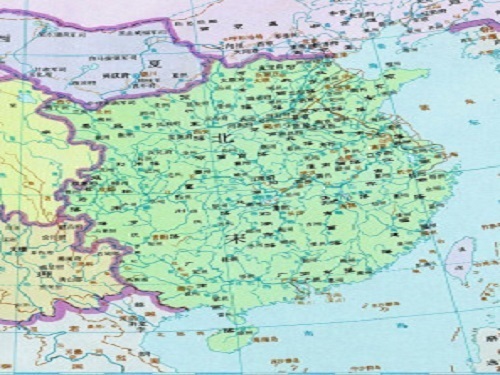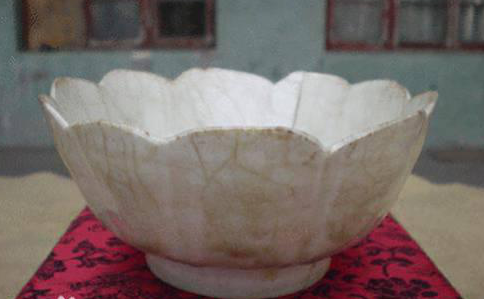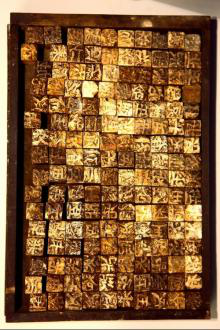Concise History of China Chapter 3 The Northern Song 北宋
2021/04/29
To help students learn Chinese better, this website will gradually introduce articles on the process of Chinese history, so that students in the understanding of Chinese history, learning Chinese, twice the result with half the effort. The article will be introduced from the beginning of the dynasty, the main characters and the major events to promote the historical process, the military, economic, scientific and technological level at that time, the status in the world, the reasons for the decline of the dynasty and so on. Only by understanding the history of China, understanding that China has only lagged behind the world for political reasons in the past 100 years, and is now moving towards a comprehensive rejuvenation. It is the trend of historical trends that can not be stopped by sleeping lions. Understand these history and present, learn Chinese well and let students know the importance of learning Chinese and future prospects.
Song Zhenzong Zhao Heng joined the throne into a new period, in the history of the Northern Song Dynasty (AD 960-1127).

In the northeast of the Northern Song Dynasty, the boundary was Haihe River, Bazhou in Hebei Province, Yanmen pass in Shanxi Province, Hengshan in Shaanxi Province, Huangshui in Gansu Province and Huangshui in Qinghai Province. Song Shenzong recovered Hehuang through the opening of the Xihe River, Song Huizong in the northern part of Qinghai Longyou Gufu, and heavy gold redemption Youyun seven states.
The Northern Song Dynasty was the most prosperous era of economy and culture in ancient Chinese history. Confucianism was revived, science and technology developed by leaps and bounds, politics was more enlightened, and economy and culture flourished. GDP $26.55 billion in three years (AD 1000), accounting for 22.7 percent of the world's share, with a per capita GDP of $450, more than $400 in Western Europe at the time.
In the Northern Song Dynasty, the population rose rapidly from 37.1 million in 980 AD to 126 million in 1124 AD.
In the Northern Song Dynasty, foreign relations developed further on the basis of the Tang Dynasty. In East Asia, North Korea and Japan in East Asia, strengthened ties with Vietnam and Indonesia in Southeast Asia, and affected West Asia and Africa.
Agricultural development
During the Northern Song Dynasty, southern farmers generally used keel overturned to irrigate,Chinese noria(scoop waterwheel) which was more powerful than keel overturned, and also used to divert water up the mountain and irrigate the mountain fields. The government of the Northern Song Dynasty twice popularized the area where the cattle were short of "treading plough ". "Tread plow" is a better tool for human soil, four or five labor force is equivalent to half of the effect of cattle farming. This has played a certain role in solving the difficulties of farming in areas with insufficient livestock strength.
With the unification of the Northern Song Dynasty, crop varieties from north to south were exchanged. In the early years of the Northern Song Dynasty, the government advised Jiangnan, Fujian, Guangdong and other places to plant the main northern grain varieties millet, wheat, millet, beans and so on. The fine varieties of rice are also popularized in various places, among which the most famous variety "Zhancheng Rice" was introduced into Fujian from Vietnam. After the extension to the Jianghuai and the north. Sugarcane, cotton, tea, mulberry and other cash crops are also expanded.
Handicraft industry
During the Northern Song Dynasty, handicraft production made great progress, Bianxiu, Song embroidery is especially famous. At that time, the scale of various handicraft workshops and the degree of internal division of labor, beyond the previous generation. The development of production technology is remarkable, and the variety, quantity and quality of products are greatly increased and improved. The most outstanding is the Northern Song Dynasty all kinds of porcelain.

The porcelain of the Northern Song Dynasty, whether in production or production technology, has greatly improved compared with the previous generation. At that time, porcelain kiln, all over the country, the porcelain has its own characteristics. Guan kiln, Jun kiln, Ru kiln, Ding kiln and Ge kiln are the five famous kilns in the Northern Song Dynasty. Guan kiln products, fine veins, body thin blue, slightly pink, thick and light; Jun kiln fine veins, glaze five colors, rabbit silk lines; Ru kiln rouge, cinnabar, color glaze clear; Ding kiln is famous for white porcelain, and can make red porcelain, its products are very beautiful; Zhang Shengyi's brother kiln and his brother Zhang Sheng II's younger brother kiln rich in celadon, the product is known as " thousand peaks in emerald colour ". During the period of Jingde, in Xinping, Jiangxi Province, the official kiln was set up.This is the famous Jingdezhen porcelain.
Carving patterns on porcelain is a new creation in the Northern Song Dynasty. It is carved with knives, embroidered with needles, printed with plates, and tapered with conical tips. Song porcelain is not only a daily necessities, but also a fine arts and crafts. The Northern Song Dynasty porcelain was sold abroad in large quantities and unearthed in Asia and Africa, which proved that porcelain was an important export at that time. Song porcelain has become a famous ancient Chinese art, and famous at home and abroad.
Mining smelting
In the Northern Song Dynasty, the mining and smelting scale of gold, silver, copper, iron, lead and coal was quite large. Important iron center Xuzhou northeast of the Liguo prison, there are 36 Metallurgical, about 4,000 miners. Xinzhou, Jiangxi Province and its vicinity rich in copper, lead , often raised more than 100,000 people, day and night chisel, copper, lead tens of millions of jin . Anhui Fanchang Metallurgical Iron site, about 2 meters high, an area of 750 square meters of scrap iron heap, reflecting the scale of smelting at that time. On the basis of the expansion of mining and smelting scale, the number of products has greatly increased. Taking copper and silver as an example, Song Shenzong learned more than 7 million kg of copper and more than 10,000 kg of silver. According to the tax rate of 2/10 levied by the government, it can be inferred that the annual production of copper is more than 35 million kg and silver is more than 50,000kg, and the output is several times higher than that of the Tang Dynasty. In addition, mining smelting technology has also made great progress.
Silk Industry
The textile industry in the Northern Song Dynasty mainly has branches of silk, hemp and wool, among which silk weaving industry still occupies the main position, and is the most developed in the Zhejiang and Sichuan regions. From Hebei East to south of the Yangtze River , the silk industry also has a considerable scale. There are many kinds of silk goods, such as Aya has more than twenty kinds, brocade has four or fifty kinds. There are many treasures in the north and south, such as Shu brocade, which has been sold well all over the country. In some areas where the silk industry is developed, a number of independent manufacturers have emerged to produce goods for sale in the form of cottage industry workshops. Reflects the silk industry production and development of the new situation.
Caoyun Shipbuilding
Kaifeng, the capital of the Northern Song Dynasty, the southeast water transport is very important, ships are indispensable means of transport, coupled with the prosperity of overseas trade, it promoted the progress of shipbuilding industry. Official workshop mainly to build water vessels, at the same time to build ships, warships, ships, private workshops to make merchant ships and cruise ships. Take the water boat as an example, the real time, the annual output reached more than 2900. The volume and load of the ships in the Northern Song Dynasty were quite large. The sea ship made by Huizong called "Shenzhou" was about 1100 tons. Sea ships are "on the balance, the lower side of the blade" pointed bottom ship, with deep draft, strong wind and waves resistance. The mainmast on the ship is more than 30 meters high and the mast is 25 meters high. The whole ship is divided into three cabins, and the middle cabins are divided into four. This waterproof equipment is the first of Chinese shipbuilding workers.
The official government of the Northern Song Dynasty has many shipbuilding sites, distributed in Jiangxi, Zhejiang, Hunan, Shaanxi and other places, among which Qianzhou (now Ganzhou, Jiangxi), Jizhou (now Jian), Wenzhou (now Zhejiang), Mingzhou (now Ningbo) are famous shipbuilding bases. Taizong, the country's annual shipbuilding has reached more than 3300, far more than the Tang Dynasty. The shipbuilding industry of the Northern Song Dynasty was in the leading position in the world at that time. In foreign trade, Chinese and foreign businessmen use mostly Chinese-made ships.
overseas trade

Maritime Silk Road
Tang Dynasty only set up a city in Guangzhou, responsible for foreign trade affairs. In addition to Guangzhou, the Northern Song Dynasty, in Hangzhou, Mingzhou, Quanzhou, Mizhou (now Shandong Zhucheng), Xiuzhou (now Zhejiang Jiaxing) five places set up a city ship division, so that the scale of foreign trade doubled. In the middle of the Northern Song Dynasty, the annual revenue of ships reached 31,500kg silver, which became an important financial revenue of the government. The goods exported by the Northern Song Dynasty were mainly silk fabrics, porcelain, metals and so on, and the imports were mainly spices, medicinal materials, ivory, jewelry and so on.
Song Dynasty ocean-going ships, whether hull structure, business scale, or the number of members are very large. The work in the ship is also completely divided. During the Song and Yuan dynasties, China's shipbuilding industry sprang up, and the scale and quantity of ships built were large. Wu Zimu ," Dream Liang Lu "volume of one or two" Jianghai ship "records, large Chinese ships carrying 500~600 tons, but also can carry 500~600 people. Medium ship load 100~200 tons, carrying 200~300 people.
Song Dynasty Culture
The Northern Song Dynasty was a very strange and unbalanced era. On the one hand, although the Northern Song Dynasty has a huge army, but the military strength is not strong, and Liao and Xixia confrontation has been at a disadvantage for a long time. Although the economy is very prosperous, but the Northern Song Dynasty government often empty treasury, living beyond its means. Because the Northern Song Dynasty "accumulated weakness" in military and "accumulated poverty" in economy, historians regard it as "the weakest dynasty in Chinese history ".
However, on the other hand, the Northern Song Dynasty was one of the most developed, cultural and artistic dynasties in Chinese history. Many major inventions in Chinese history appeared in the Northern Song Dynasty. In the 11th and 12th centuries, the living standards of China's big cities were comparable to those of any other city in the world. The Northern Song Dynasty in literature and art, but also celebrities, the peak. The Northern Song Dynasty was one of the most prosperous dynasties in Chinese history.
Science and technology
Gunpowder
Gunpowder was gradually applied to the war from the late Tang Dynasty. The Northern Song Dynasty set up a special organization in Bianjing to manufacture firearms, which was introduced into Europe through the countries of Western Asia.
Compass
The compass was gradually applied to navigation in the Northern Song Dynasty. At that time, the technology of artificial magnetization using natural magnets was mastered, and the magnetism of artificial magnets was much more stable than that of natural magnets.
Movable Printing

typography
Engraving printing developed rapidly in the Northern Song Dynasty and was widely used to engrave books.
The Northern Song Dynasty did not completely unify ancient China, but also basically unified ancient China. Twice crusade Liao failed, Youyun 16 states and Western Liaoning, Liaodong is still in Qidan hands. Party Xiang Li Jiqian and his descendants later controlled Xiazhou, Lingzhou and Hexi Corridor and established Xixia. Jiaozhou established the cross-toe state, but also became the Song Dynasty vassal state, that is, Vietnam's independence.
Jing Kang's Change
The change of Jingkang refers to the historical event that Jingkang two years (AD 1127), the Jin Dynasty attacked and captured the capital of the Northern Song Dynasty, Tokyo, and captured the the two emperors, which led to the death of the Northern Song Dynasty. Also known as Jingkang chaos, Jingkang difficult, Jingkang disaster.
In 1125 AD, the Jin army divided east and west to attack the Song Dynas.
In the first month of the first year of Jingkang (1126 AD), Wanyan Zonghan led the Jinbing East Road army to Bianjing City, forcing the Song Dynasty to discuss and withdraw its troops. The Jin people demanded 52 million gold and 50 million silver coins, and ceded three towns, Zhongshan, Hejian and Taiyuan. In August of the same year, the Jin army attacked the Song Dynasty in two ways; in November, the Jin two Route Army captured Bianjing. Song Qinzong personally to the Jin military camp to discuss peace, was detained by the Jin people.The change of Jingkang led to the demise of the Northern Song Dynasty.
After the shame of Jing Kang in 1127 AD, Zhao Jian, the ninth son of Song Huizong, survived and became king in Ying Tianfu (now Shangqiu, Henan). In 1138 AD, the Song Dynasty moved south, Dingdu Linan House (now Hangzhou, Zhejiang) opened a new era of the Southern Song Dynasty.
Through this period of Chinese history in the Northern Song Dynasty, we can see that a country is strong not only economically but also in need of national defense
Edited by Baoyang from Shanghai Beihaimandarin





